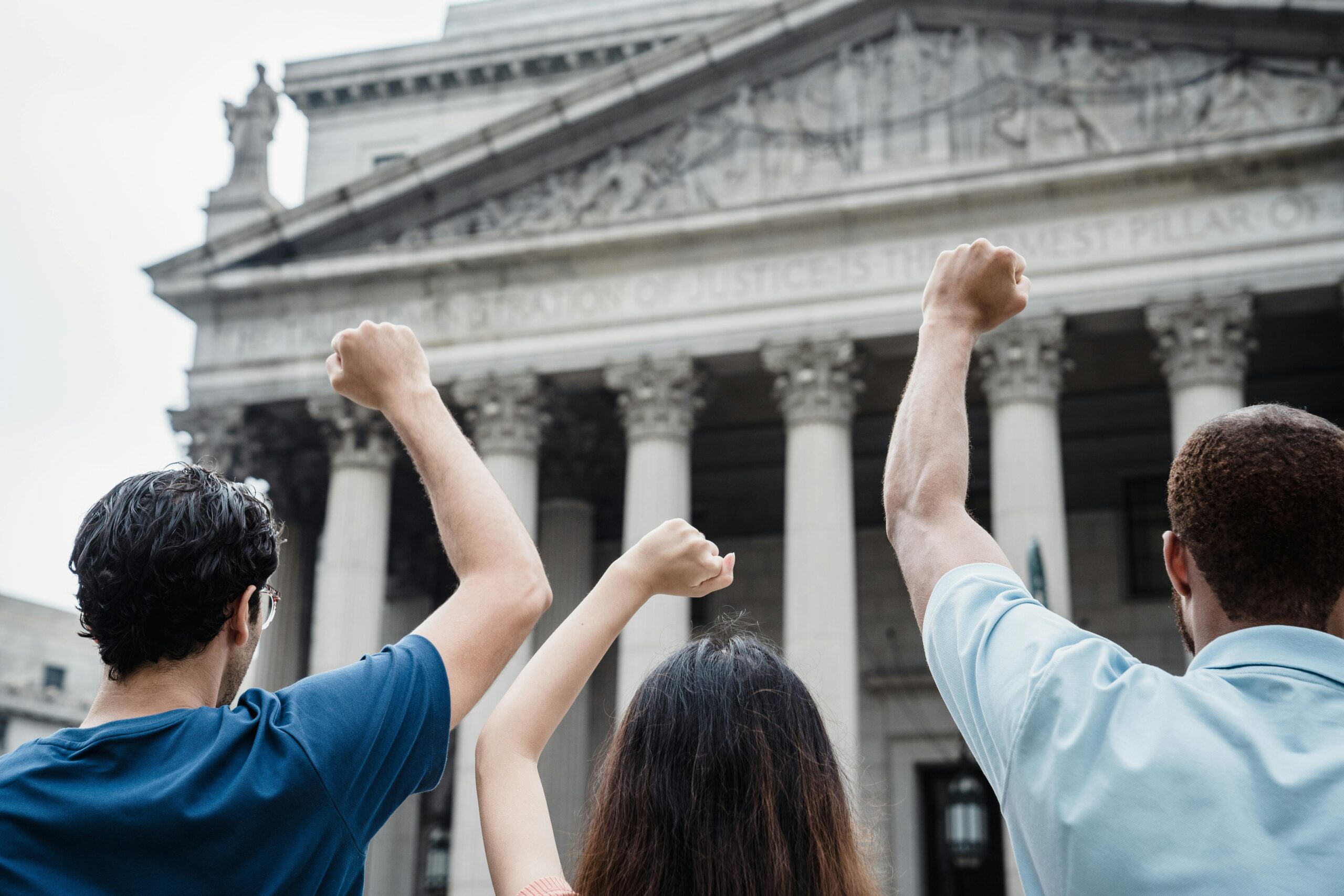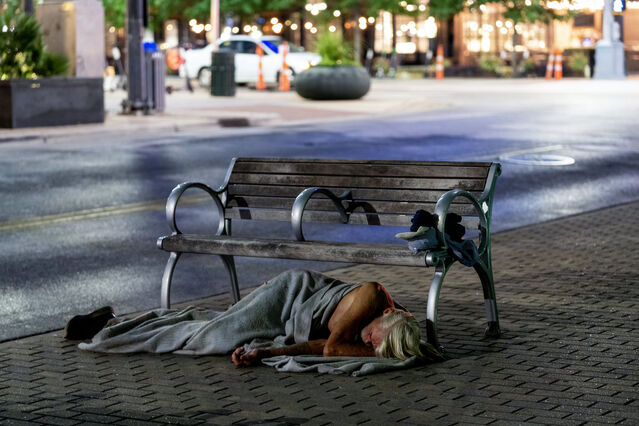
Avenues for Solutions and Advocacy
In 1968, the U.S. Congress defined a hate crime as a crime in which the defendant intentionally selects a victim, or in the case of a property crime, the property that is the object of the crime, because of their race, color or national origin. Since the 1980s, the homeless community–and poor people in general–have been ostracized and dehumanized. According to the National Homelessness Law Center, at least 187 cities have enacted laws to criminalize life-sustaining acts like camping, sleeping, and panhandling. Criminalizing homleessness villainizes and pushes people experiencing homelessness into hiding. The forced isolation caused by criminalization makes people experiencing homeless targets for those intent on causing harm to them. Because the homeless community is often forced to live on the outskirts of the community, many attacks go unreported, and homeless people are far more likely than the general population to be a victim of violent crime. Anti-homeless violence lays bare the structural and economic injustice suffered by those who are insecurely housed. The severity of these attacks necessitates immediate policy changes, enhanced services, and legislative reforms.
From 2020-2022, there were 97 incidents of anti-homeless violence.
Also from 2020-2022, 47 people experiencing homelessness lost their lives to violence perpetrated against them.
Since 1999, 70% of victims have been over the age of 40 and 86% were male
In the past 23 years, there have been 1,923 hate crimes reported against those experiencing homelessness, 558 of those attacks being lethal.
The Criminalization of Homelessness and the Perpetuation of Violence
Criminalization of acts that those experiencing homelessness turn to for survival often causes a rise in hate crimes against those engaging in life-sustaining behavior. This criminalization includes:
• Prohibiting sleeping in public city-wide, or in a particular public place
• Prohibiting camping in public city-wide, or in a particular public space
• Prohibiting sitting/lying in a particular public space
• Prohibiting lodging, living, or sleeping in vehicles (or parking a vehicle used as a lodging/living accommodation)
• Prohibiting loitering/loafing/vagrancy city-wide
• Prohibiting loitering/loafing in particular public places
• Laws that prohibit panhandling in public places
• Limiting, banning or requiring onerous permitting for food sharing city-wide or in particular public places
There is a documented relationship between the appearance of criminalization of homelessness laws, and the increase of hate crimes or violent acts against homeless people.One possible explanation for this is the message that criminalizing homelessness sends to the general public: “Homeless people do not matter and are not worthy of living in our city.” This message is blatant in the attitudes many cities have toward homeless people and can be used as an internal justification for attacking someone.

Policy Solutions and Advocacy
The following policy recommendations offer short- and long-term solutions that will reduce violent crime against people experiencing homelessness and develop permanent solutions that keep all people safe and housed.
- Ensure Housing as a Human Right for All People
The core solution to homelessness is housing. Safe, decent, affordable, and accessible housing for all not only provides a place of stability for people as they seek to reconnect with family and friends, health and community, jobs and meaning. It also keeps people from dying on the streets–from all causes, including violence crime. We as a nation must embrace housing as a basic human right, one that everyone deserves, regardless of their race, gender identity, sexual orientation, age, abilities, or any other factor.
- Reverse Ordinances and Municipal Practices that Criminalize Homelessness
Communities across the U.S. have passed anti-homeless ordinances that create an environment of harassment, while failing to offer solutions. Laws that outlaw camping, sleeping, eating, bathing, and relieving oneself in public–as well as anti-panhandling ordinances essentially make it illegal for someone to be homeless, opening the door to mistreatment by law enforcement and the general public. A first important step is for communities to reverse these laws and practices and instead focus on housing, supportive services, and other real solutions that help people get off the street.
- Enact Hate Crimes Legislation and Sentencing Guidelines
Due to the bias-motivated violence documented here, and in past Hate Crimes reports, NCH advocates for both including people experiencing homelessness as a protected class under hate crimes status, and implementing vulnerable victims sentencing guidelines. Either type of initiatives would serve to discourage this particular type of biased victimization, and work to find justice for homeless victims.
- Collect More Complete Data on Crimes against People Experiencing Homelessness
NCH advocates for federal, state and city governments to conduct data collections to track violence against homeless individuals. Arrest reports could include a box indicating if a victim was homeless, or HUD could add a victimization survey to its annual Point-in-Time count and service intake survey.
The core solution to homelessness is housing. Safe, decent, affordable, and accessible housing for all not only provides a place of stability for people as they seek to reconnect with family and friends, health and community, jobs and meaning. It also keeps people from dying on the streets–from all causes, including violence crime. We as a nation must embrace housing as a basic human right, one that everyone deserves, regardless of their race, gender identity, sexual orientation, age, abilities, or any other factor.
Communities across the U.S. have passed anti-homeless ordinances that create an environment of harassment, while failing to offer solutions. Laws that outlaw camping, sleeping, eating, bathing, and relieving oneself in public–as well as anti-panhandling ordinances essentially make it illegal for someone to be homeless, opening the door to mistreatment by law enforcement and the general public. A first important step is for communities to reverse these laws and practices and instead focus on housing, supportive services, and other real solutions that help people get off the street.
Due to the bias-motivated violence documented here, and in past Hate Crimes reports, NCH advocates for both including people experiencing homelessness as a protected class under hate crimes status, and implementing vulnerable victims sentencing guidelines. Either type of initiatives would serve to discourage this particular type of biased victimization, and work to find justice for homeless victims.
NCH advocates for federal, state and city governments to conduct data collections to track violence against homeless individuals. Arrest reports could include a box indicating if a victim was homeless, or HUD could add a victimization survey to its annual Point-in-Time count and service intake survey.





